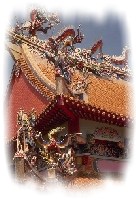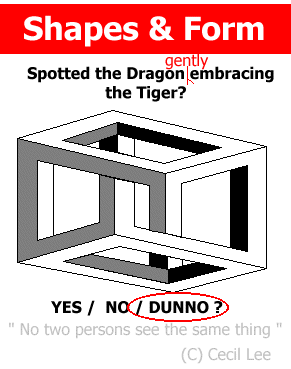Free Module 2: Shapes & Form Feng Shui
Chapter 2: The birth of the "Shapes & Form School" of Feng Shui

The Water Dragon Classic written in 600 AD was one of the earliest documented studies on Feng Shui. This school of Feng Shui is commonly called " Water-Dragon " or " Water " Feng Shui. Water Feng Shui looks at the flow of water surrounding a plot of land.
Around the period AD840 - 888CE, an Imperial Feng Shui Master and Chinese Scholar Yang Yun Sung was said to be the first to compile the first Feng Shui manual based on the features of the land. In his book he described the wonderful hills and mountains of Gui Lin, which is now a famous popular tourist spot in China.
The Shapes and Form School of Feng Shui:-

Founder : Yang Yung Sung Place : Kwangsi province, China. Period : Around the period AD840 - 888CE. Also known as : Kanchow method, Kwang Hsi School, Kiangsi method and Shapes School. Method : By visual survey of the landscape, the site and the specific location. Principles used : Chi (or Dragon's Breath), Four Symbolic Animals Theory, Yin and Yang and the Five Elements
In 10th Century AD, Chinese scholars living in Northern China created the Compass School to `deal with their own problems' of analyzing flat plains. It was thus important to find good locations for building palaces, temples, settlements and homes lead the ancient Chinese to combine the two methods: The Shapes and Form School was first applied to look at the surrounding. The purpose of the exercise was to survey the environment qualities of a location and determine whether it is good or bad. The Chinese Compass (Luopan) was used to read the alignments of the land area:-
The Compass School of Feng Shui:-
|
The above are considered the most correct facts on the founding of the Shapes and Form School and the Compass School of Feng Shui. The Compass School of Feng Shui comprises the Eight House Theory and the Flying Star Theory.
 |
In addition, in some other documented books on Feng Shui you may find a different version as to the founding of the two schools. We shall not go through all of them. Instead, in the coming Chapters we will focus on the key principles and practises of the various Feng Shui Schools. This is where we all can benefit most.
|
[ Site Search | Forum Search | Picture Search | Site Map ] |
|
|
|
|
||
|
Help Desk: (65) 9785-3171 |
||
|
|
|
|
|
Highlights |
|
Extend your learning with Master Cecil Lee's Applied Feng Shui Made Easy Book. |
|
Site Navigation |
|
|
|
|
![]()
![]()




